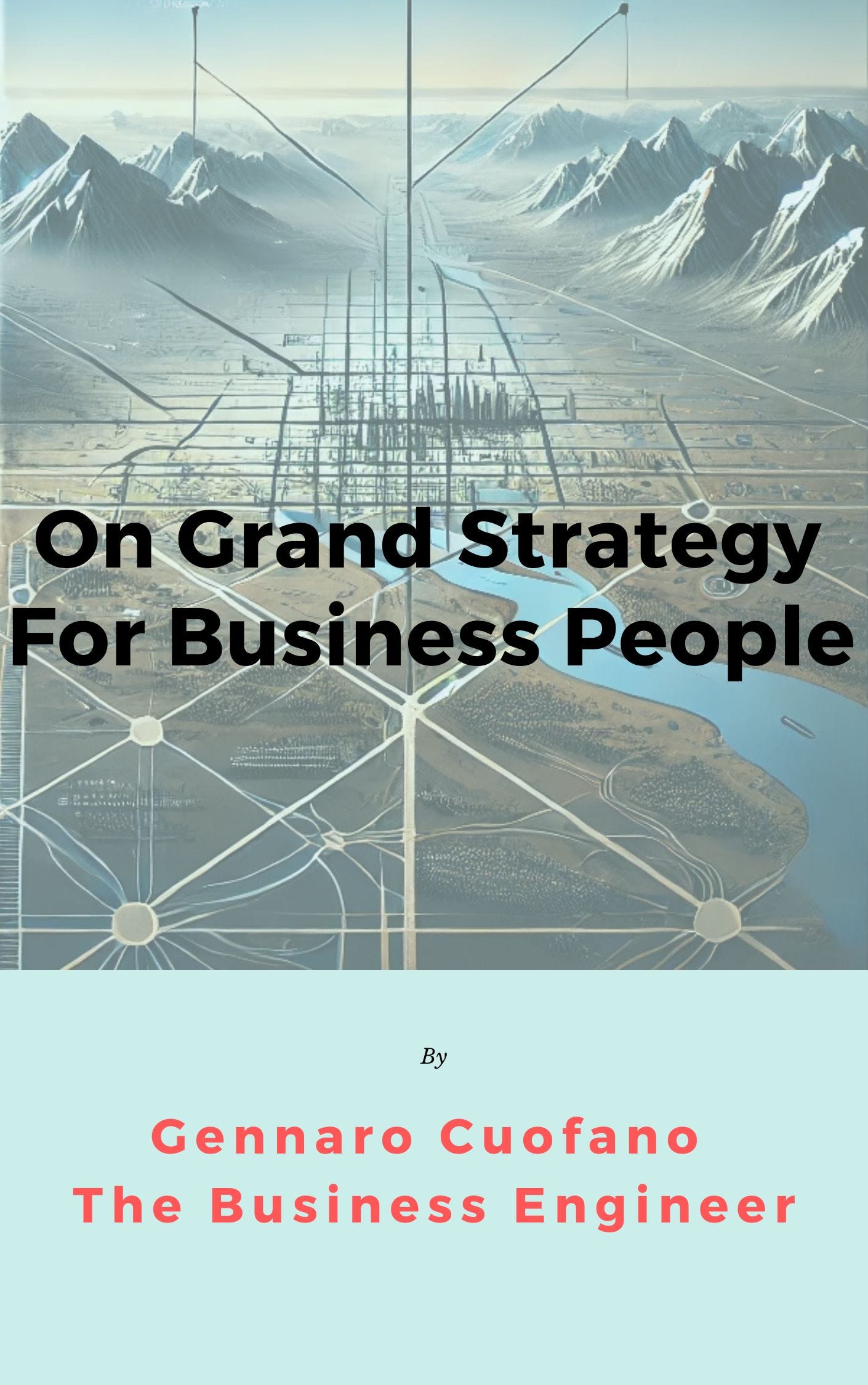Multi-Horizon Strategic Map
Timing is probably the most critical factor in business, yet it can’t be controlled.
That’s why balancing short-term operational needs with long-term strategic actions becomes the core and key element for a successful strategic implementation.
Indeed, in Time Horizons Analysis, I’ve shown you how startups must balance their short-term operational needs with long-term strategic planning in a rapidly evolving tech business landscape to survive the short term while thriving in the long term.
I want to show you another key piece: the multi-horizon integration perspective.
Or how to properly allocate resources to immediate (tactical), mid-term (strategic), and long-term (visionary) operations to feed the core business model while creating options to create a whole new business model for the long term.
Indeed, a business model is dynamic, not static.
Its goal is to sit on top of the current map (strategy) to move the company toward its vision (grand strategy).
Yet, it had to do it while ensuring the company survived the short term.
I’ve designed the Multi-Horizon Classification Matrix to help organizations categorize their strategic initiatives across three distinct time horizons.
Immediate Horizon (0-2 Years) – Focuses on short-term operational efficiency and quick wins.
Mid-Term Horizon (3-5 Years) – Centers on strategic growth, innovation, and capability expansion.
Long-Term Horizon (6- 10+ Years) – Involves disruptive innovation, high-risk investments, and industry transformation.
This matrix helps businesses evaluate and allocate resources effectively by determining which horizon an initiative belongs to based on business objectives, time-to-impact, resource requirements, risk levels, innovation type, and other key factors.
Breaking Down the Three Horizons With Strategic Implications
Immediate Horizon (0-2 Years) – Tactical Execution & Efficiency
Purpose:
Ensures operational stability and revenue growth through incremental improvements.
Focuses on low-risk initiatives with immediate business impact.
Key Characteristics:
Business Objectives: Quarterly targets and annual financial goals.
Time-to-Impact: Immediate revenue impact, quick implementation wins.
Resource Requirements: Uses current budget and existing teams.
Uncertainty & Risk: Low risk, known outcomes, established techniques.
Innovation Type: Incremental improvements, process optimization.
Examples: Website redesign, product updates, marketing optimization.
Success Metrics: Revenue/profit growth, operational efficiency.
Leadership Focus: Tactical leaders, operations management.
Decision Process: Standard approval channels and operational reviews.
Implementation Approach: Standardized processes, efficiency-driven execution.
Strategic Insight:
Companies focusing only on the immediate horizon risk long-term irrelevance if they fail to invest in future innovation.
Mid-Term Horizon (3-5 Years) – Strategic Growth & Innovation
Purpose:
Positions the company for future growth by developing new capabilities and expanding into adjacent markets.
Balances risk and reward while building a foundation for long-term transformation.
Key Characteristics:
Business Objectives: Long-term revenue growth and market positioning.
Time-to-Impact: 2-3 year growth curve, staged implementation.
Resource Requirements: Requires some additional investment and cross-functional collaboration.
Uncertainty & Risk: Moderate risk, adapting to emerging market trends.
Innovation Type: Substantial advancements, business model innovation.
Examples: New product line launch, market expansion strategy.
Success Metrics: Market share growth, new customer acquisition.
Leadership Focus: Business unit heads, strategic development.
Decision Process: Strategic planning, stage-gate investment.
Implementation Approach: Adaptation-focused, cross-functional teams.
Strategic Insight:
Failure to invest in mid-term innovation leads to stagnation and reactive decision-making.
Long-Term Horizon (6-10+ Years) – Visionary Innovation & Market Disruption
Purpose:
Focuses on high-risk, high-reward projects that can transform industries and create new market categories.
Requires long-term strategic bets, significant R&D, and visionary leadership.
Key Characteristics:
Business Objectives: Multi-year strategic plans, new market creation.
Time-to-Impact: More than 5 years before significant returns.
Resource Requirements: Requires large-scale R&D budgets and specialized research teams.
Uncertainty & Risk: High uncertainty, speculative outcomes.
Innovation Type: Disruptive and radical innovations.
Examples: Quantum computing research, autonomous systems platform.
Success Metrics: Patent generation, strategic market positioning.
Leadership Focus: C-suite executives, visionary leadership.
Decision Process: Venture investment, long-term strategic bets.
Implementation Approach: Experimental, iterative discovery process.
Strategic Insight:
Over-focusing on long-term projects without short-term financial stability can lead to financial collapse.
Typical Resource Allocation Across Horizons
Successful organizations allocate resources across the three time horizons strategically:
70% – Immediate Horizon (Ensuring stability and operational efficiency).
20% – Mid-Term Horizon (Innovating and scaling to maintain growth).
10% – Long-Term Horizon (Investing in breakthrough technologies and future markets).
This balanced approach ensures survival while fostering continuous growth and innovation.






